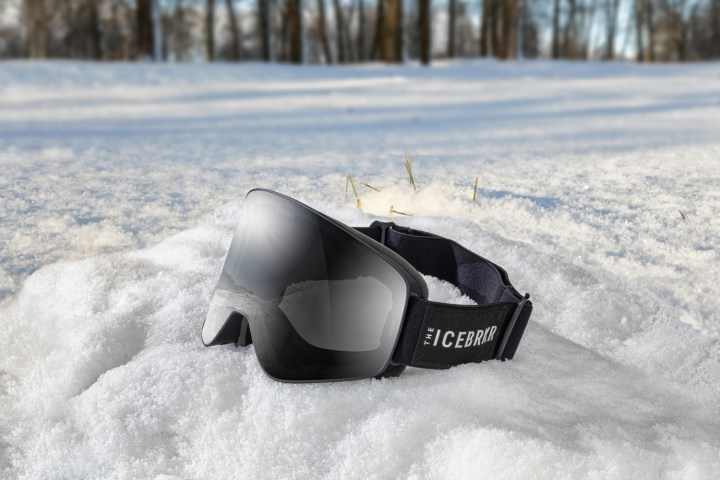
One of the most dangerous parts of skiing or snowboarding while listening to your favorite tunes is the fact that you have absolutely no chance of hearing the outside world when you’re flying down the slopes. It’s important to be able to hear other people around you, lest you be pounded into the snow by a careening teen.
That’s where Bone Tech’s new IceBrkr goggles come in handy. Aesthetically, they look like a fairly standard pair of ski googles, but they’ve got a pretty cool trick up their sleeve: Bone conduction tech, which allows them to use the vibration of your skull to play your favorite songs.
To do it, the googles — claimed by the company to be the first-ever ski goggles with bone conduction integration — use patented bendable arms that provide constant contact between audio transducers and your the outside of your ears. Because there is nothing actually obstructing your ear canal — and because the sound is coming from inside of your skull, you can hear the sounds of the world around you even when your jamming out on the slopes.
The IceBrkr also use Bluetooth 5.0 MESH technology, allowing up to 18 devices that are also MESH compatible to pair with the goggles. The upper portion of the goggles features volume control and power buttons, and there is an App control key on the bottom of the frame. There’s also a bidirectional microphone for making calls, and the lenses of the goggles can be easily swapped, as they feature a magnetic lens.
“IceBRKR is the answer to staying as connected as you want to be on the slopes”; said Bone Tech CEO Marco Collini in a press release. “You can take calls, listen to music or podcasts, all without removing your gloves or mask or blocking out the sound around you.”
We’ve been impressed with the bone conduction technology we’ve come in contact with in the past, most recently the Aftershokz Aeropex, which we gave a 4-star rating. Headphones and other devices using this tech make it much safer to work out or do other public activities where hearing the outside world is vital, and that makes them really compelling products for specific listening situations. Frankly, we’re surprised it took this long for ski goggles using the tech to be developed. Skiers need to hear their surroundings — even if they want to blast AC/DC while they’re shredding.



